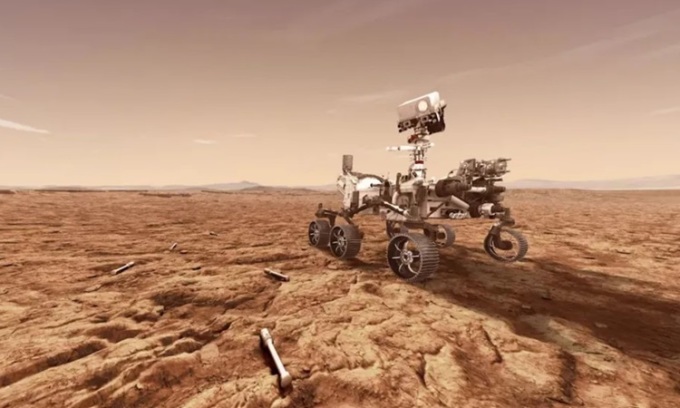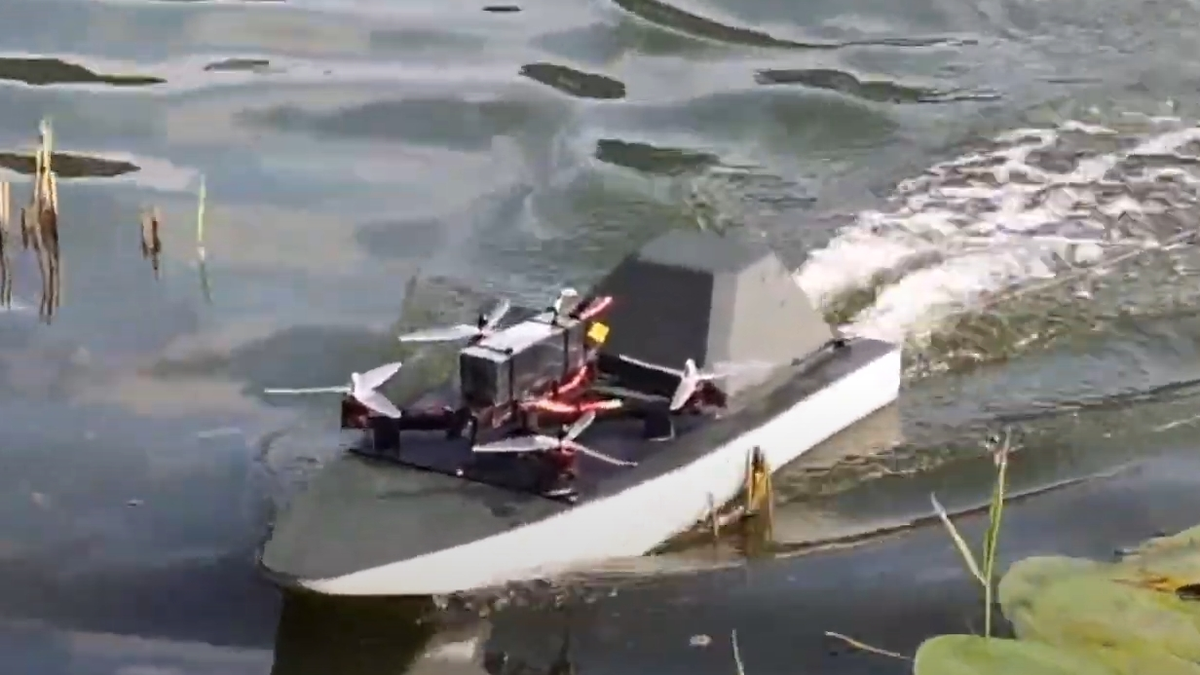The discovery of an ancient lakebed beneath Perseverance's location on Mars means the rover could have access to bacterial fossils.

Simulation of the Perseverance robot collecting samples from Mars. Photo: NASA
NASA's Perseverance rover has discovered that Mars' Jezero Crater was once filled with water, raising hopes that fossilized life could be unearthed on the red planet, Live Science reported. Perseverance first landed on the crater in February 2021 with the now-defunct Ingenuity helicopter. The rover made its discovery using ground-penetrating radar, revealing layers of silt that once belonged to a lake that later dried up into a giant delta.
The discovery raises hopes that after the geological samples collected by Perseverance from the crater are returned to Earth, researchers may find evidence of ancient life that once flourished on Mars. The team published the findings on January 26 in the journal Science Advances .
“From orbit we can see a variety of sediments, but we can’t be sure what we’re seeing is their original state,” said study leader David Paige, a professor of planetary sciences at the University of California, Los Angeles. “To understand how they formed, we need to look below the surface.”
NASA’s Perseverance rover is a key part of the $2.7 billion Mars 2020 mission. Since arriving on Mars, along with the older Curiosity rover, Perseverance has searched for signs of ancient life on the planet’s surface by navigating through the 30-mile-wide Jezero Crater, collecting dozens of rock and soil samples to bring back to Earth. For three years, the rover has been accompanied by the Ingenuity helicopter, which made its 72nd and final flight on Mars on January 18.
The rover-sized Perseverance is equipped with seven scientific instruments, one of which is the Radar Imaging Mars Subsurface Experiment (RIMFAX). By emitting radar signals every 10 centimeters along its long, solitary journey, the robot builds a map of echoes from about 20 meters below the crater's surface.
Now, the radar map reveals the presence of silt, suggesting that the crater was once flooded by a giant lake. This is something that previous studies have speculated but never been able to confirm. Like dry lakes on Earth, the silt was transported by a river, forming a large delta, before being deposited and weathered in two separate periods of erosion. Since life on Earth relies heavily on water, evidence of water on Mars could be an important clue that the planet once hosted life.
To bring the precious sample back to Earth, the Perseverance robot will wait for the European Space Agency (ESA) to launch the Sample Recovery Lander. This spacecraft is equipped with a small rocket. The rover will transfer the soil and rock samples to the rocket before it fires back into orbit. After launching into space, the rocket containing the sample will be collected by NASA's ERO orbiter for return to Earth. NASA originally planned to launch ERO in 2026 but has been pushed back to 2028, meaning the earliest the sample will return to Earth is 2033.
An Khang (According to Live Science )
Source link




















































![[Maritime News] More than 80% of global container shipping capacity is in the hands of MSC and major shipping alliances](https://vphoto.vietnam.vn/thumb/402x226/vietnam/resource/IMAGE/2025/7/16/6b4d586c984b4cbf8c5680352b9eaeb0)













































Comment (0)